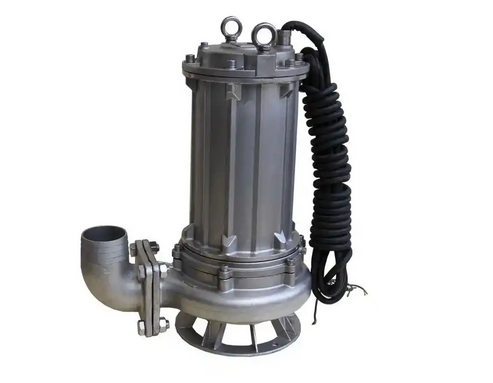Non-clogging sewage pump mechanical seal
The mechanical seal of a non-clogging sewage pump is one of its key components and has an important impact on the performance and reliability of the pump. The following is a detailed analysis of the mechanical seal of a non-clogging sewage pump:
1. Importance
The mechanical seal is used to prevent the liquid in the pump body from leaking into the external environment. For a non-clogging sewage pump, its importance is self-evident. High-quality mechanical seals can ensure the long-term stable operation of the pump and reduce maintenance costs and downtime.
2. Structure and working principle
The mechanical seal of a non-clogging sewage pump is usually composed of a moving ring, a static ring, a spring, a sealing ring and other components. The moving ring is connected to the pump shaft and rotates with the pump shaft; the static ring is fixed to the pump body and forms a sealing surface with the moving ring. When the pump shaft rotates, the sealing surface between the moving ring and the static ring will produce relative movement, thereby preventing liquid leakage.
The role of the spring is to maintain close contact between the moving ring and the static ring to ensure the sealing effect. The sealing ring is used to prevent external impurities from entering the mechanical seal and keep it clean and lubricated.
3. Material selection
The material selection of the mechanical seal of a non-clogging sewage pump is crucial. The dynamic ring and the static ring are usually made of wear-resistant and corrosion-resistant alloy materials to ensure their service life and performance. The spring is made of high-strength, corrosion-resistant alloy steel wire or stainless steel. The sealing ring is made of elastic and wear-resistant rubber or fluororubber and other materials.
4. Maintenance and care
In order to ensure the long-term and stable operation of the mechanical seal of the non-clogging sewage pump, it is necessary to perform regular maintenance and care on it. Specific measures include:
Regularly check the wear of the mechanical seal and replace the severely worn parts in time.
Keep the mechanical seal clean and lubricated to prevent impurities and dirt from entering its interior.
Regularly check the elasticity and tightness of the spring to ensure its normal operation.
When installing and disassembling the mechanical seal, strictly follow the operating procedures to avoid damage to its components.
5. Faults and troubleshooting
The mechanical seal of the non-clogging sewage pump may leak, wear and other faults during use. For these faults, the following measures can be taken to eliminate them:
Check whether the mechanical seal is installed correctly and ensure that the sealing surface between the dynamic ring and the static ring is in close contact.
Check whether the spring has lost its elasticity or broken, and replace the damaged spring in time.
Check whether the seal ring is aged or severely worn, and replace the damaged seal ring in time.
For the dynamic ring and static ring that are severely worn, new parts need to be replaced in time.

In summary, the mechanical seal of the non-clogging sewage pump is one of its important components, which has an important impact on the performance and reliability of the pump. Therefore, sufficient attention and concern need to be given during the selection, installation, use and maintenance process.




